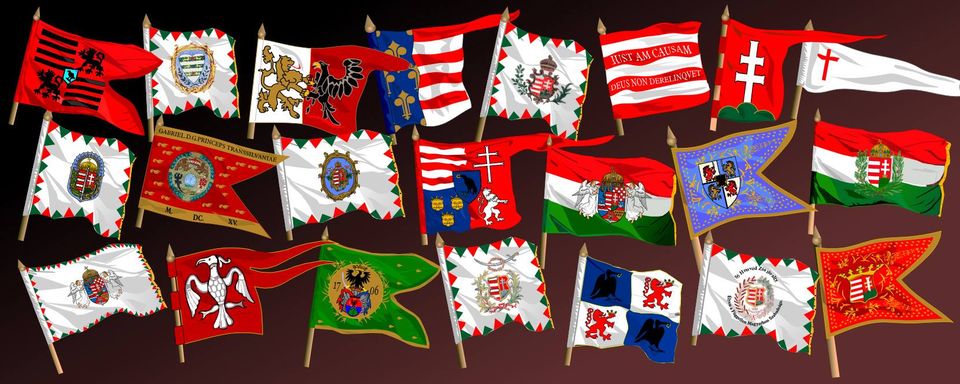
The historical flags of Hungary.
Symbols are of great importance for every nation. They spark a sense of unity as well as pride. Since 2015, Hungary has celebrated Flag and Coat of Arms Day on March 16.
Hungarians are particularly proud of their national symbols. Be it relics, the Holy Crown of St. Stephen I, or the flag and coat of arms. While other symbols remained unchanged over the centuries, the flag and the coat of arms were subject to constant changes until they came to their present form.
The fact that the flag means much more than a piece of cloth was already described by one of the great Hungarian poets, Dezső Kosztolányi:
Only a stick and cloth,
yet not a stick and cloth,
but a flag.
Always talking.
Always fluttering.
Always feverish.
Always delirious
above the street,
striving upwards,
up to the skies,
and proclaiming something
with passion.
Even when people get used to it and ignore it,
when they sleep,
night and day,
so that it became emaciated
and stands, like a frail apostolic preacher
on the ridge of the roof,
alone,
wrestling with silence and storms,
uselessly and ever more majestically,
fluttering,
speaking.
You, my soul, you too, you too –
not stick and cloth –
be a flag.
Translation by Kery, Leslie A.
The present flag of Hungary with the national colors became official on March 16, 1848. On that day, the use of the flag and coat of arms on public holidays was made mandatory for all public institutions in the country. For this reason, in 2014, the Hungarian Parliament designated March 16 as Flag and Coat of Arms Day, which was celebrated for the first time in 2015. In their explanatory statement, the MPs said that the red-white-green flag, which expresses the unity and national independence of the Hungarian nation, and the coat of arms, as defined in the Fundamental Law, are part of the national cultural heritage, and therefore is the common responsibility of the institutions, organizations, and citizens of the Hungarian nation to respect them.
After the suppression of the freedom fight in 1849, the flag became a forbidden symbol, as it symbolized the independence of the country. Only after the Austro-Hungarian Compromise of 1867, was it allowed to fly again on public buildings.
In 1896, two forms of the coat of arms were determined: the so-called medium state coat of arms and the small state coat of arms (the large state coat of arms was never created). Both existed in two versions: with angels as shield holders or framed by olive and oak branches.
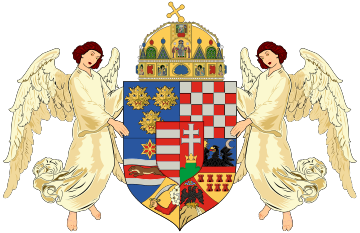
The united coat of arms of the countries of the Holy Crown of Hungary with angels as shield holders (Medium State Coat of Arms) (Photo: Wikipedia)
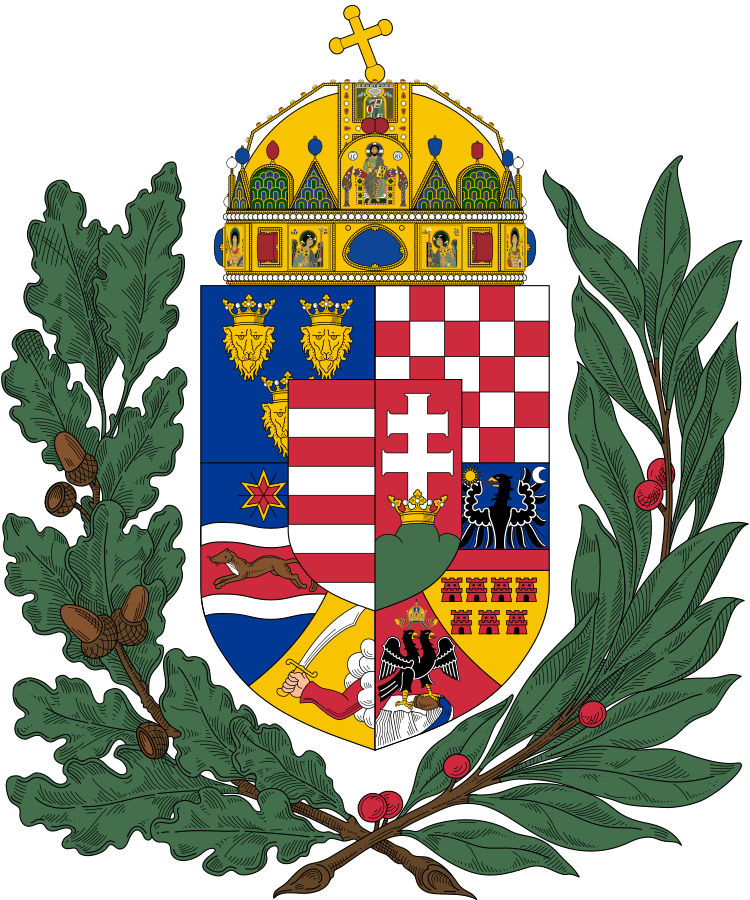
The united coat of arms of the countries of the Holy Crown of Hungary framed by olive and oak branches (Medium State Coat of Arms) (Photo: Wikimedia)
In the period of the turn of the century and the 20th century, the coat of arms went through many changes. There was the so-called Kossuth coat of arms (terminologically correct is the Small Coat of Arms Without the Crown), followed by the hated communist coats of arms such as that of the Rákosi regime. The use of this coat of arms (which strictly speaking, is not a coat of arms according to heraldry, since it is not in the form of a shield) led to one of the strongest symbols of Hungary: the flag with the hole in the middle. During the freedom fight in 1956, the symbol of communist oppression with the red five-pointed star was cut out of the flag.
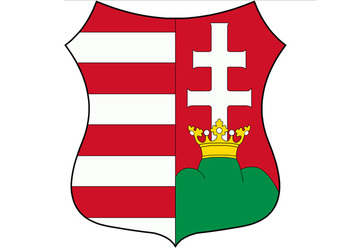
The Kossuth Coat of Arms (photo: magyarvagyok.hu)
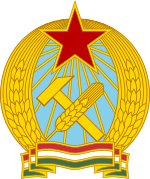
The symbol of the Rákosi regime (photo: Wikipedia)
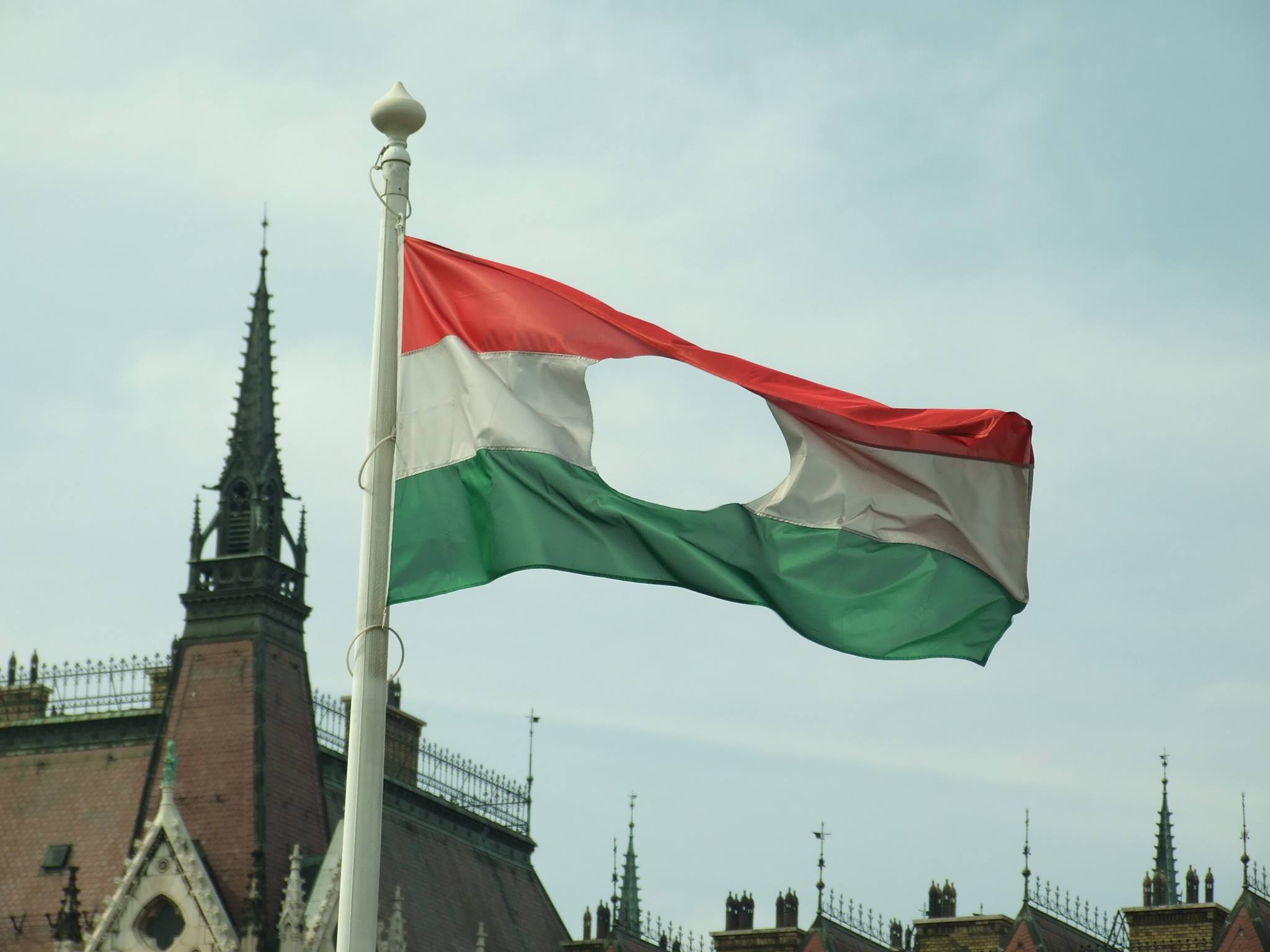
The 1956 flag with a hole (Photo: Facebook Euronews magyarul)
This was followed by a somewhat modified form of the communist coat of arms from 1957, until 1990, when the Small State Coat of Arms with the Crown became the official coat of arms of the Republic of Hungary.
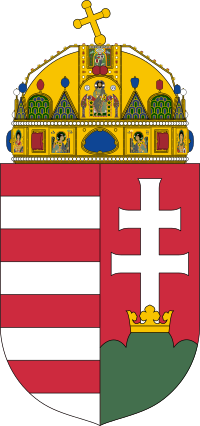
The special coat of arms of Hungary (Small State Coat of Arms) (Photo: Wikipedia)
Accordingly, the coat of arms of Hungary is a pointed, divided shield, the first field of which is cut seven times in red and silver, while the second, red field in the center of the green triple mound has a silver double cross with a golden crown. On the shield rests the Hungarian Holy Crown.
The official flag is the red-white-green flag divided into three stripes of equal width.
However, on national holidays, some of the most important historical flags of Hungary are always strung alongside the present flag.
Three versions of the coat of arms are in use today, but not everyone is allowed to use each version:
Only the President of the Republic is entitled to use the coat of arms with angels as shield holders. The coat of arms framed with olive and oak branches may be used by the Prime Minister and the Speaker of Parliament. The third, plain form of the coat of arms may be used by a broader class, such as self-governments, government representatives, the judiciary, or even the National Bank.
The Hungarian national anthem, flag, and coat of arms are protected by criminal law, i.e. the Criminal Code criminalizes the violation or intentional damage of the national symbols. Those who violate or damage them can even be jailed.
Featured photo: Facebook Történelmi zászlók